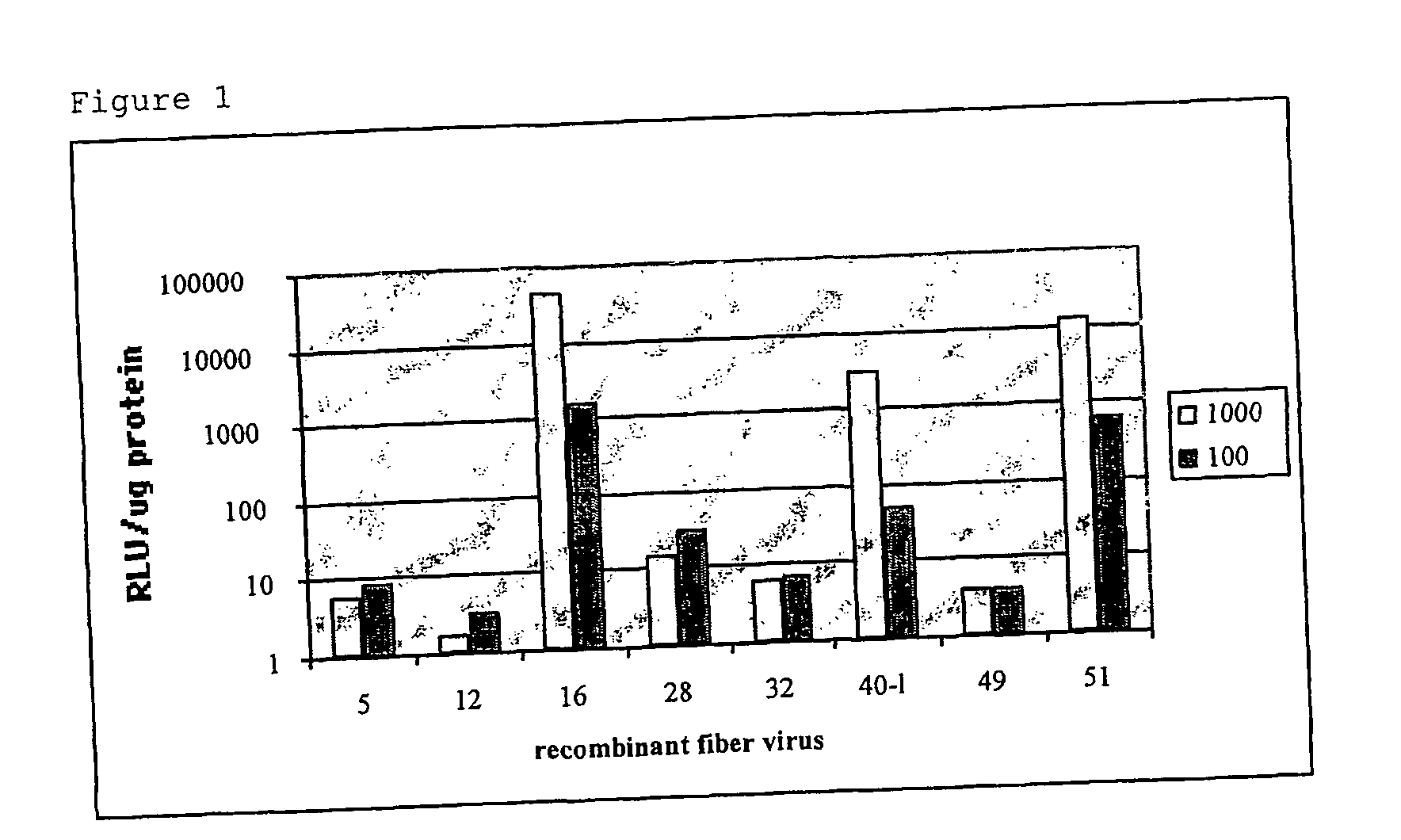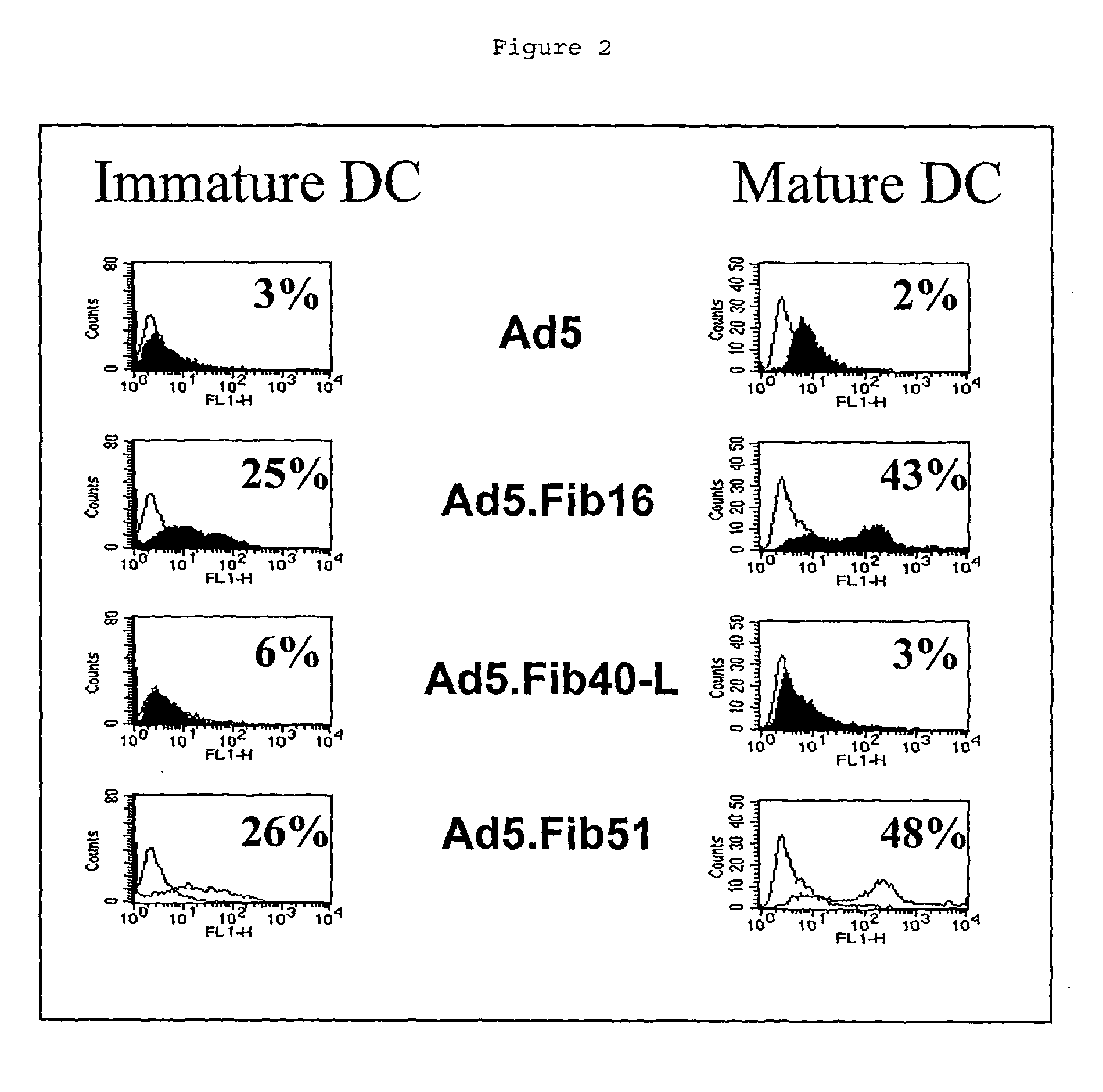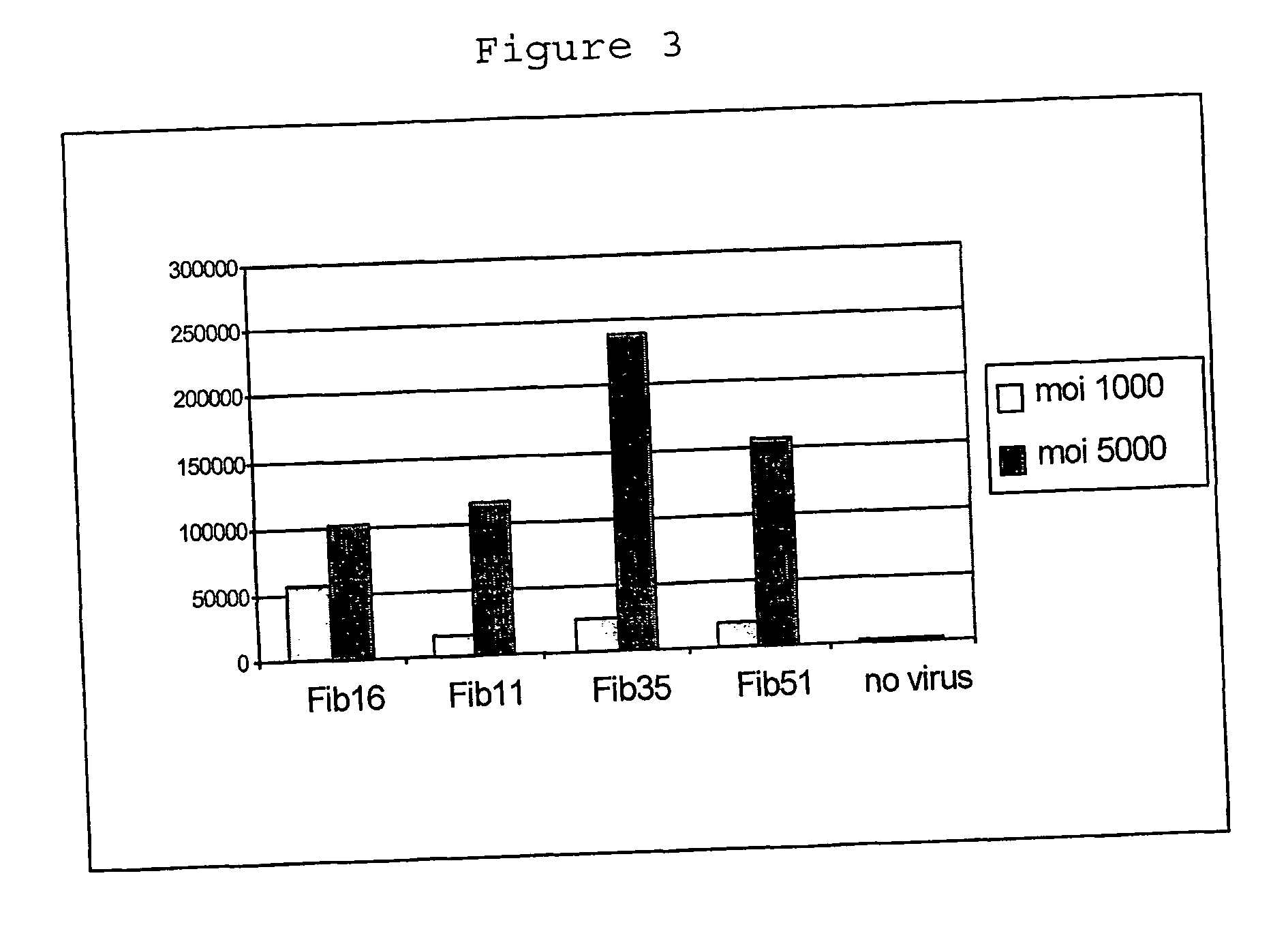Gene delivery vectors provided with a tissue tropism for dendritic cells
a technology of dendritic cells and gene delivery vectors, which is applied in the field of gene delivery vectors provided with tissue tropisms for dendritic cells, can solve the problems of insufficient in vivo delivery capacity of adenovirus vectors, limited use of current vectors in specific applications, and inability to easily transduce endothelial cells and smooth muscle cells
- Summary
- Abstract
- Description
- Claims
- Application Information
AI Technical Summary
Benefits of technology
Problems solved by technology
Method used
Image
Examples
example i
[0066] An Ad5 / fiber35 Chimeric Vector with Cell Type Specificity for Dendritic Cells
[0067] Human PBMC from healthy donors were isolated through Ficoll-Hypaque density centrifugation. Monocytes were isolated from PBMC by enrichment for CD14.sup.+ cells using staining with FITC labeled anti-human CD 14 monoclonal antibody (Becton Dickinson), anti-FITC microbeads, and MACS separation columns (Miltenyi Biotec).
[0068] This procedure usually results in a population of cells that are <90% CD14.sup.+ as analyzed by FACS. Cells were placed in culture using RPMI-1640 medium (Gibco) containing 10% Foetal Bovine Serum ("FBS") (Gibco), 200 ng / ml rhu GM-CSF (R&D / ITK diagnostics, 100 ng / ml rhu IL-4 (R&D / ITK diagnostics) and cultured for 7 days with feeding of the cultures with fresh medium containing cytokines on alternate days. After 7 days, the immature dendritic cells resulting from this procedure express a phenotype CD83.sup.-, CD14.sup.low or CD14.sup.-, HLA-DR.sup.+, as was demonstrated by F...
example ii
[0070] 5.times.10.sup.5 immature DCs were seeded in wells of 24-well plates and exposed for 24 hours to 100 and 1000 virus particles per cell of each fiber recombinant virus. Virus tested was Ad5, and the fiber chimeric viruses based on Ad5: Ad5.Fib 12, Ad5.Fib16, Ad5.Fib28, Ad5.Fib32, Ad5.Fib40-L (long fiber of serotype 40), Ad5.Fib49, and Ad5.Fib51 (where Fibxx stands for the serotype from which the fiber molecule is derived). These viruses are derived from subgroup C, A, B, D, D, F, D, and B respectively. After 24-hours, cells were lysed (1% Triton X-100 / PBS) and luciferase activity was determined using a protocol supplied by the manufacturer (Promega, Madison, Wis. USA). The results of this example, shown in FIG. 1, demonstrate that Ad5 poorly infects immature DCs as evidenced by the low level of transgene expression. In contrast, Ad5.Fib16 and Ad5.Fib51 (both a B-group fiber chimeric virus) and also Ad5.Fib40-L (Subgroup F) show efficient infection of immature DCs based on luci...
example iii
[0071] In a second experiment, 5.times.10.sup.5 immature and mature dendritic cells were infected with 10,000 virus particles per cell of Ad5, Ad5.Fib16, Ad5.Fib40-L, and Ad5.Fib51 all carrying the LacZ gene as a marker. LacZ expression was monitored by flow cytometric analysis using a CM-FDG kit system and the instructions supplied by the manufacturer (Molecular Probes, Leiden, NL). The results of this experiment, shown in FIG. 2, correlate with the previous experiment in that Ad5.Fib16 and Ad5.Fib51 are superior to Ad5 in transducing mature and immature human DCs. Also, this example shows that Ad5.Fib40-L is not as good as Ad5.Fib16 and Ad5.Fib51, but is better than Ad5.
PUM
| Property | Measurement | Unit |
|---|---|---|
| Density | aaaaa | aaaaa |
| Density | aaaaa | aaaaa |
| Density | aaaaa | aaaaa |
Abstract
Description
Claims
Application Information
 Login to View More
Login to View More - R&D
- Intellectual Property
- Life Sciences
- Materials
- Tech Scout
- Unparalleled Data Quality
- Higher Quality Content
- 60% Fewer Hallucinations
Browse by: Latest US Patents, China's latest patents, Technical Efficacy Thesaurus, Application Domain, Technology Topic, Popular Technical Reports.
© 2025 PatSnap. All rights reserved.Legal|Privacy policy|Modern Slavery Act Transparency Statement|Sitemap|About US| Contact US: help@patsnap.com



